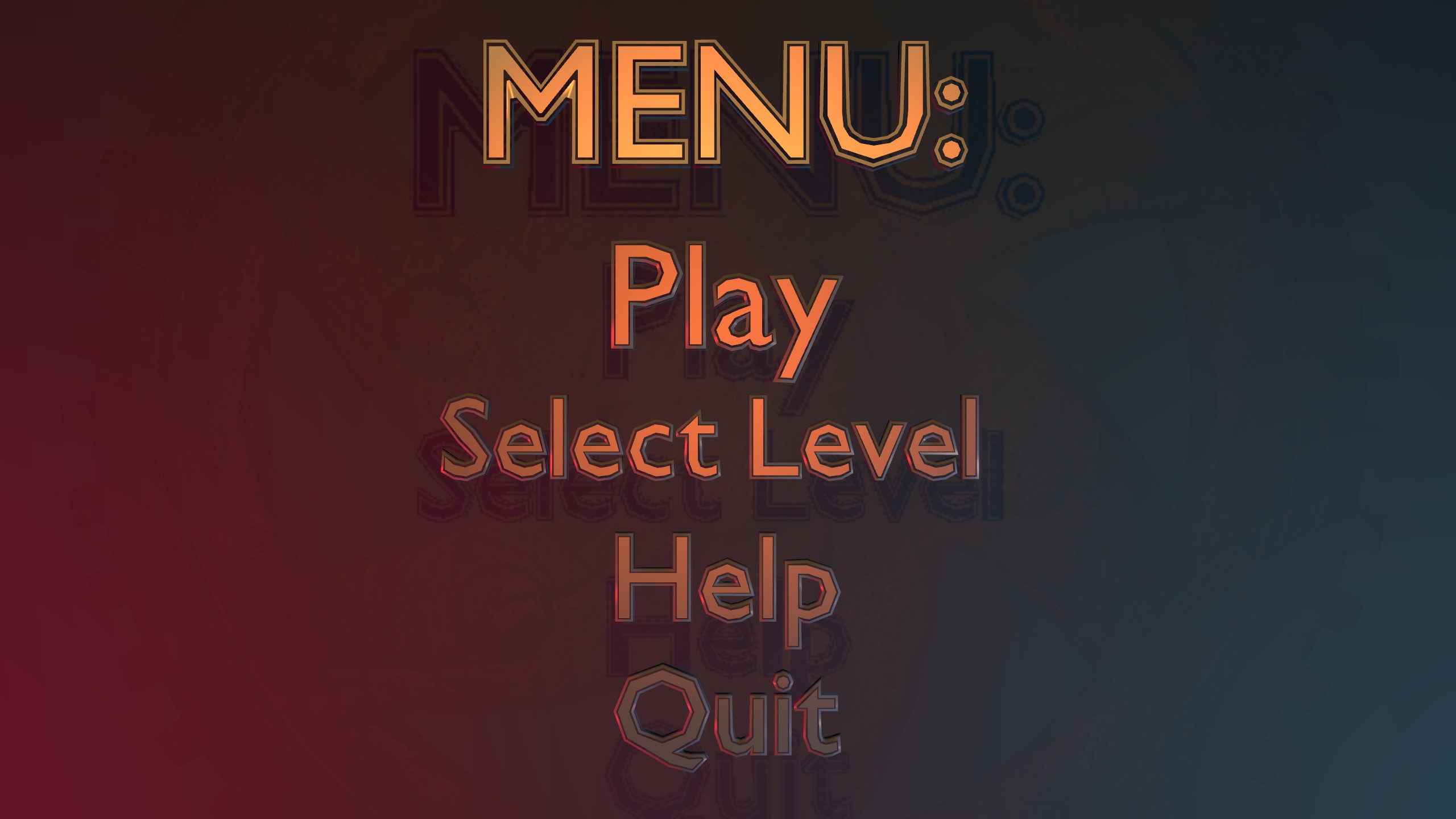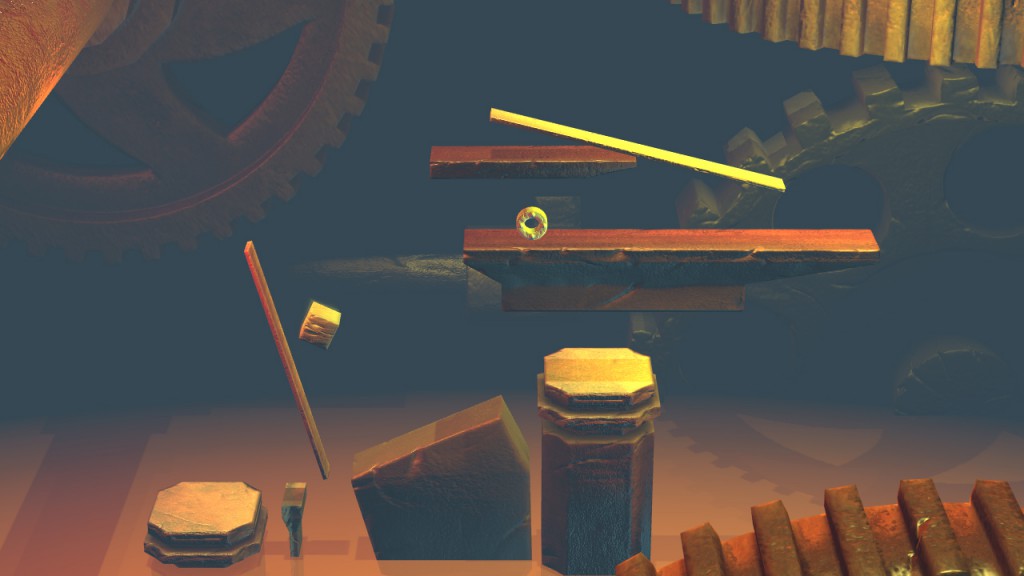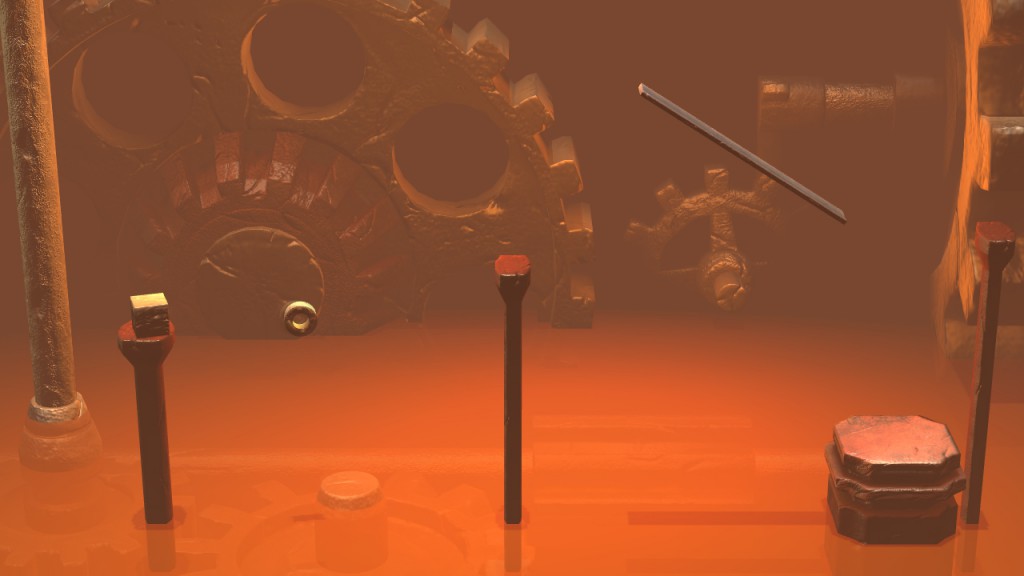
Inside The Gear – Review
Inside the Gear looks like a promising steampunk take on the old and tired physics puzzler genre. It is the developer’s first venture into making games, and sadly, it shows..
Story
Listed as a Key Feature, Inside the Gear has ‘No stories, just puzzles and lots of gears!’, which is perfectly fine for a puzzle game. In the case of indie-games, sometimes it is better to skip all pretense and just leave out the story part altogether to focus on the main aspect, in this case: the puzzles. Sadly, the quality of the puzzles does not seem to be covered that well either.
Graphics
The steampunk theme looked pretty good in the previews, with the big gears in the background and mysterious atmosphere surrounding them. Upon launching the game and clicking through what must be one of the ugliest menus in gaming ever, it became apparent the graphics are mostly dull and low resolution. Apart from the ever so slightly different slowly rotating cogs in the background there isn’t much going on. Even the colors look dull and uninspired. But then again, a game doesn’t have to look amazing to be a good puzzler.
Sound
No sound would be preferred over the horrible noise that is in the game. A puzzler game like Inside the Gear really doesn’t need to play sound every time you move a piece. This on its own would be pretty annoying, but understandable; what really drives it home are the cringeworthy low-quality sound bites. Don’t expect to be able to turn them off in-game, even this basic option is lacking. After turning off the sound in windows, we can focus on the gameplay to see if it is the redeeming factor it needs to be.
Gameplay
The objective in each of the twenty-five levels is to touch a platform with the wheel by moving various objects like planks and cubes, making use of gravity and physics. In later levels there are two platforms that have to be reached, in a non-disclosed, but set order.
Key features go wrong in Inside the Gearn such as inconsistent hitboxes and physics. For a game relying so heavily on said physics, it is quite unsettling to see a round object slowing down on a downwards slope. Objects have a habit of glitching, through other supposedly solid surfaces, ruining your carefully planned out trajectory calculations. Moving objects through the level is done with the WASD keys for movement in the plane and QE for rotation. With no rebindable controls, this leads to your hand being forced into some extremely awkward positions on non-qwerty keyboards. The other controls are better, with tab to switch between moveable objects and backspace to reset a level. No controller or mouse support is implemented, even the menus have to be navigated with the arrow keys.
All that being said, the level design is pretty clever. There is never a straightforward answer, and by making clever use of the very limited tools there are endless possibilities to reach your goal. Even when not being plagued by glitchy mechanics, some levels are frustratingly difficult, which can be quite discouraging especially since there are absolutely zero hints to point you in the right direction and no way to skip to the next level. Although the ‘help’ option in the pause menu might give some hope on those really seemingly impossible levels, selecting it only leads to an overview of the control scheme.
There are only twenty-five levels in the game, and depending on whether or not you get stuck often, they can be completed quite quickly once you come to grabs with how everything reacts to different impulses. Although later levels have more platforms and static objects, they essentially stay the same, with roughly the same objects available to build paths. Don’t think this means it gets boring after a short while, the levels are actually surprisingly varied and equally challenging. There isn’t much of a learning curve to speak of though, even the very first level can be quite a challenge, especially when you’re not familiar with the mechanics.
Some more additions would be nice, like for instance a level designer or a mode which lets you use infinite resources, all sound like they could add a lot more content to the very basic game as it is now. Optional hints would be nice as well, since not all of us have infinite patience to keep trying every single possibility when stuck on that one nasty level.
Conclusion
Even if it worked without a hitch, there are better alternatives, albeit without the same degree of challenge. With physics not working as intended and a dull, low-res implementation of a potentially interesting idea, Inside the Gear feels like a waste of good level design and setting. Although the idea that it’s one man’s debut into game developing deserves some respect, from a consumer’s point of view, this game is probably not worth your time and/or money. The overall unpolished feeling is perfectly summarized in the trailer, with some fairly bad English and cheap transitions. It does have steam trading cards though…









No Comments